2021 — Anniversaries of significance in Canada
The 50th anniversary of the Multiculturalism Policy

In 1971, Canada is the first country in the world to adopt multiculturalism as an official policy, intending to preserve the cultural freedom of all individuals and provide recognition of the cultural contributions of diverse ethnic groups to Canadian society. For many years following this initial action, multicultural policies do not meet the needs of all immigrants to Canada, but the introduction of the term brings attention to the need for federal coordination to reflect the diversity of Canadian society.
The 75th anniversary of Viola Desmond challenging racial segregation
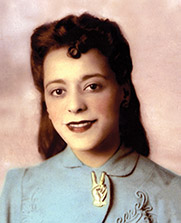
On November 8, 1946, Viola Desmond, an African-Nova Scotian businesswoman, challenges racial inequality by refusing to leave a whites-only seating area of the Roseland Theatre in New Glasgow, Nova Scotia. After being forcibly removed from the theatre by police, arrested and charged, she refuses to accept the charges against her and takes her case to Nova Scotia’s Supreme Court, where she loses her appeal. Her challenge against segregation represents an important step in the struggle for rights in Canada. In 2018, she is the first Canadian woman featured on a regularly circulating Canadian $10 bill.
The 100th anniversary of the schooner Bluenose ’s launch in Lunenburg, Nova Scotia
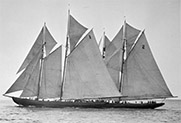
On March 26, 1921, Smith & Rhuland Shipyard in Lunenburg, Nova Scotia launches what is arguably the most famous ship in Canadian history, the schooner Bluenose. Bluenose is best-known for its dominance in the International Fisherman's Race, open to fishing schooners that worked in the North Atlantic deep sea fishing industry. Nicknamed the “Queen of the North Atlantic”, this fishing and racing schooner symbolizes Nova Scotia’s prominence in the fishing and shipbuilding industries. In 1937, the Royal Canadian Mint stamps its sculptured profile on the Canadian dime, increasing Bluenose’s iconic status as a Canadian symbol.
The 100th anniversary of the discovery of insulin

Formed in 1920, at the University of Toronto, a group of researchers led by Frederick Banting and his student Charles H. Best and including J.B. Collip and J.J.R. Macleod, succeeds in producing extracts of pancreas that contain an effective anti-diabetic agent, which they name “insulin”. One of Canada’s greatest contributions to modern medical history, the discovery of insulin transforms the treatment of the once fatal disease of diabetes, saves millions of lives and leads to the award of the Nobel Prize in Physiology or Medicine to Banting and Macleod in 1923.
The 100th anniversary of the election of Agnes Campbell Macphail, first female Member of Parliament
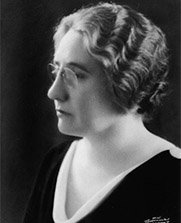
On December 6, 1921, in the first federal election in which women had the right to run as candidates, Agnes Campbell Macphail is the first woman elected to the Canadian House of Commons. She is elected as a member of the Progressive Party of Canada for the Ontario riding of Grey South East. The only woman in the House of Commons until 1935, she serves as a Member of Parliament until 1940, championing the working class and her rural constituents. She then returns to politics in the 1943 Ontario election, and becomes one of the first 2 women elected to the Legislative Assembly of Ontario.
The 150th anniversary of the signing of Treaty 1 and Treaty 2; 100th anniversary of Treaty 11
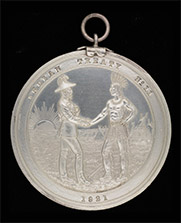
A response to both First Nations demands for the protection of their lands and interests and the Crown’s desire for western expansion, Treaties 1 and 2 conclude in Manitoba in 1871. This launches a treaty negotiation process across the West and North, culminating with Treaty 11 in the Northwest Territories in 1921. Each with their own unique clauses, the Treaties generally promise reserve lands, annuities, and hunting and fishing rights. However, where First Nation signatories understood the Treaties as frameworks for relationships of coexistence, the Crown saw them as large-scale land conveyances. The government at the time largely ignored the Treaties, and instead used the Indian Act to implement assimilation policies and gain access to natural resources in traditional First Nations territories.
The 150th anniversary of the province of British Columbia joining Confederation
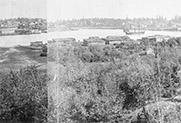
British Columbia joins Confederation as Canada’s sixth province on July 20th, 1871. For the colony’s settler population, union with Canada offers the promise of a transcontinental railway, responsible government, and relief from crippling public debt. Many eastern Canadians see British Columbia as a commercial gateway to the Pacific Rim, and also eye its rich natural resources. First Nations people – the vast majority of the new province’s inhabitants – have no say in negotiating the Terms of Union between Canada and British Columbia.
The 25th anniversary of National Indigenous Peoples Day

National Indigenous Peoples Day was declared in 1996 and is celebrated annually on June 21. It is a day for all Canadians to recognize and celebrate the unique heritage, diverse cultures and outstanding contributions of First Nations, Inuit and Métis peoples.
The 50th anniversary of the JUNO Awards

Named in tribute to Pierre Juneau, the first chairperson of the Canadian Radio-television and Telecommunications Commission, the JUNO Awards are founded in 1971 to promote Canadian music. With increasingly diverse representation, the annual event now spans a full week, culminating in a ceremony that showcases the inclusivity and excellence of Canada’s music industry.
The 50th anniversary of Gerhard Herzberg winning the Nobel Prize in Chemistry

Born in Germany, the physicist Gerhard Herzberg seeks refuge at the University of Saskatchewan in 1935 where he becomes renowned for his work in spectroscopy. Following his move to the National Research Council in Ottawa, Herzberg's laboratory becomes an international hub in this field. In 1971, he is awarded the Nobel Prize in Chemistry "for his contributions to the knowledge of electronic structure and geometry of molecules, particularly free radicals."
The 100th anniversary of the proclamation of the arms of Canada
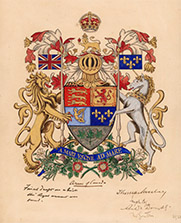
King George V proclaims the Coat of Arms of Canada on November 21, 1921. The design features the royal coats of arms of England, Scotland, Ireland, and France, with 3 maple leaves to represent Canada. The white and red mantling inspires the National Flag of Canada 40 years later. Today, red and white are the national colours of Canada.
The 125th anniversary of the discovery of gold in the Yukon, sparking the Klondike Gold Rush

In 1896, family members George Carmack, Shaaw Tláa (Kate) Carmack, Kèsh "Skookum" (Jim) Mason, and K̲áa Goox (Dawson) Charlie find a creek bed thick with gold deposits near the Klondike River in present-day Yukon. News of the gold strike spread fast across Canada and the United States, and over the next 2 years, an estimated 100,000 prospectors travel to the region with the hope of finding fortune and gold.
The 200th anniversary of the start of the Lachine Canal construction
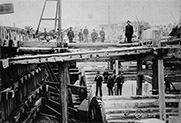
In 1821, the government authorizes the construction of the Lachine Canal. A group of Montréal merchants is behind the project, anxious to expand trading networks on the St. Lawrence River by bypassing the Lachine Rapids. Built mostly by Irish labourers, the Canal facilitates shipping between Montréal and the Great Lakes, enabling Montréal to become one of the main hubs of North American trade.